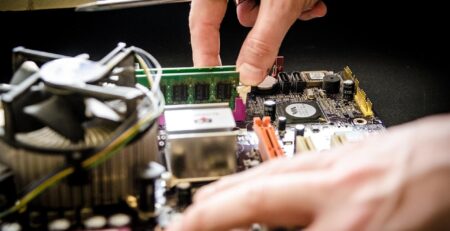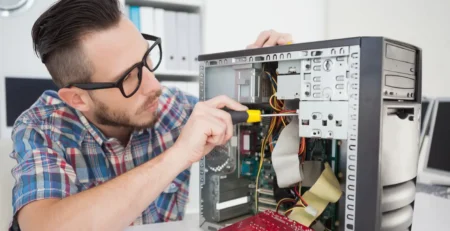Automated Backups: How To Set Up Scheduled File Backup Systems
In our increasingly digital world, the importance of safeguarding our valuable data cannot be overstated. Enter automated backups a solution designed to alleviate the burden of manual backup processes and provide a seamless, reliable approach to data preservation. Many individuals and businesses struggle with the challenges of consistent manual backups, often leading to data loss and operational disruptions. This article dives into the world of automated backups and scheduled file backup systems, offering a comprehensive guide to their setup, benefits, and how they address the pitfalls of manual approaches. By the end, you’ll be equipped with the knowledge to ensure the security and continuity of your digital assets.
Understanding Automated Backups

What Are Automated Backups?
Definition and importance
Automated backups refer to the process of creating and saving copies of your important files and data at scheduled intervals without manual intervention. This approach eliminates the need for constant user interaction, ensuring that your data is regularly and consistently backed up. The importance of automated backups lies in their ability to provide a safety net against data loss due to hardware failure, accidental deletion, malware attacks, or other unforeseen events.
Different methods of automated backups
Full Backups: These are complete copies of all data, ensuring that every file is preserved. While comprehensive, full backups can be time and resource-intensive.
Incremental Backups: These backups capture only the changes made since the last backup, reducing the storage space required and backup duration. However, restoration may require multiple backup sets.
Differential Backups: Similar to incremental backups, differential backups save changes since the last full backup. Unlike incremental backups, they don’t require multiple backup sets for restoration.
Continuous Data Protection: This method continuously backs up changes to files in real time. It ensures minimal data loss but may impact system performance.
Cloud Backups: Storing backups in the cloud offers off-site redundancy, ensuring data survival even in the face of physical disasters.
Automated backups mitigate the risks associated with manual backups, ensuring that your data remains secure and accessible no matter the circumstances. By exploring different methods, you can tailor your backup strategy to match your data protection needs.
Why Choose Automated Backups Over Manual Backups?
Automated backups run on a predefined schedule, guaranteeing that your data is consistently and regularly backed up without relying on human memory or diligence. Manual backups are prone to human error, such as forgetting to back up or using incorrect settings. Automated backups eliminate this risk, ensuring accurate and error-free data preservation. Manual backups can be time-consuming, especially for larger datasets. Automated backups occur in the background without disrupting your workflow, saving you valuable time. Some automated backup methods, such as continuous data protection, offer real-time backup, ensuring minimal data loss in case of unexpected events. Automated backups use consistent settings and processes, preserving the integrity of your data without the risk of accidental changes. As your data grows, automated backups can adapt to accommodate larger volumes without additional manual effort.
Automated backups are crucial for businesses to protect sensitive information, financial data, customer records, and operational files. Protecting personal photos, documents, and files from loss due to hardware failure or accidental deletion. Ensuring the security of work-related files for those working from various locations. Safeguarding code repositories, configuration files, and development environments. Backing up transaction data, customer information, and product listings to prevent disruptions to online operations. Protecting research data, student records, and educational materials from loss.
Automated backups offer a level of reliability and convenience that manual backups simply can’t match. Whether you’re an individual, a business, or an organization, embracing automated backups empowers you to safeguard your data seamlessly and efficiently.
Platforms and Tools for Automated Backups
Windows
Setting up automated backups on Windows can be accomplished using the built-in backup feature called “Backup and Restore.”
Click on the “Start” button. Type “Backup and Restore” in the search bar and select the corresponding result. In the Backup and Restore window, click on “Set up backup.” Select an external hard drive, a network location, or DVDs as the backup destination. It’s recommended to use an external drive or network location for better protection. Windows will automatically select the libraries containing your documents, pictures, videos, and music. You can also choose to include a system image, which is a snapshot of your entire system. Review your backup settings, including the backup location and the items to be backed up.
Choose the option to “Let me choose” to customize the backup schedule. Select a frequency (daily, weekly, or monthly) and a time when your computer is typically on. Click “Save settings and run backup” to initiate the first backup. Windows will then create a backup of the selected items according to your schedule. You can monitor the progress of your backups in the Backup and Restore window. If you ever need to restore files, you can use the “Restore my files” option in the Backup and Restore window.
Remember that the “Backup and Restore” feature is available in Windows 7, Windows 8, and Windows 10. However, Microsoft is gradually phasing it out in favor of newer backup solutions. For Windows 10 users, the recommended method is to use the built-in File History feature or consider third-party backup software for more advanced options. Always ensure that your backup solution aligns with your data protection needs.
MacOS
On macOS, you can use the built-in backup feature called Time Machine to set up automated backups.
Connect an external hard drive or a compatible network storage device to your Mac. Click on the Apple menu in the top-left corner of the screen. Select “System Preferences.” Click on “Time Machine.” In the Time Machine preferences window, click on “Select Backup Disk.” Choose the connected external drive or network storage as the backup destination. If the selected drive is not formatted for Time Machine, you will be prompted to erase and format it.
After selecting the backup disk, turn on Time Machine by toggling the switch in the preferences window. Click on the “Options” button to specify which items you want to exclude from backups, such as system files or specific folders. Time Machine will now automatically back up your Mac at regular intervals. The initial backup might take some time, but subsequent backups will focus on changes and additions. You can monitor the progress and status of Time Machine backups by clicking on the Time Machine icon in the menu bar.
If you need to restore files, simply click on the Time Machine icon, enter the Time Machine interface, and navigate to the desired date to recover specific files or your entire system.
Time Machine provides an intuitive and user-friendly way to ensure your data is regularly backed up on macOS. However, it’s important to keep in mind that Time Machine backups are typically stored on an external drive. For added protection, consider using cloud-based backup solutions in conjunction with Time Machine to safeguard your data from physical disasters or theft.
Linux
On Linux systems, you can use various tools to set up automated backups. One popular choice is using the ‘rsync’ utility along with a cron job to create scheduled backups. Here’s a general outline of how to set up automated backups on Linux.
Open a terminal.
Use the package manager specific to your Linux distribution to install rsync. For example, on Ubuntu, you can use: ‘sudo apt-get install rsync’.
Connect an external hard drive or a network location where you want to store your backups.
Open a text editor in the terminal (e.g., nano, vim, gedit).
Create a backup script using the ‘rsync’ command. For example: rsync -av –delete /source_directory /backup_destination
Replace /source_directory with the directory you want to back up and /backup_destination with the location where you want to store the backups.
Save the script with a meaningful name and close the text editor.
In the terminal, navigate to the location of the script.
Make the script executable by running: chmod +x script_name.
Open the crontab editor by typing: crontab -e.
Add a line to schedule the backup script to run at your desired intervals. For example, to run the backup every night at 2:00 AM: 0 2 * * * /path/to/backup_script
Save and exit the crontab editor.
You can monitor the backup process by checking the backup destination for new files.
This method provides a basic approach to automated backups on Linux using ‘rsync’ and ‘cron’ jobs. However, there are also dedicated backup solutions available for Linux, such as Duplicity, Bacula, and Amanda. Depending on your requirements and technical expertise, you can choose the tool that best fits your needs to ensure consistent and automated data protection on Linux systems.
Cloud-Based Solutions
Cloud-based backup solutions offer a convenient and secure way to automate backups while ensuring your data is stored off-site. Here are some popular cloud backup tools suitable for Windows, macOS, and Linux.
Backblaze offers easy-to-use backup solutions for Windows and macOS. It provides unlimited backup space and continuous data protection, ensuring your files are backed up as you work.
Carbonite is known for its automatic and secure cloud backup solutions for Windows and macOS. It supports multiple device backup and allows easy file recovery.
Acronis True Image offers comprehensive backup and recovery solutions for Windows, macOS, and Linux. It includes features like full image backups, ransomware protection, and cloud integration.
IDrive provides cross-platform backup solutions for Windows, macOS, and Linux. It offers secure cloud storage, continuous data protection, and versatile recovery options.
CrashPlan offers cloud backup for Windows, macOS, and Linux. It allows customization of backup schedules and retention policies, making it suitable for various needs.
How to Set Up Scheduled File Backup Systems

Choosing the Right Schedule
Deciding on the backup frequency depends on the criticality of your data and your willingness to balance between data protection and system performance.
If your data changes frequently, more frequent backups are advisable. Determine how much downtime is acceptable during backup processes. Frequent backups might affect system performance, so balance this with backup frequency. Critical data may require more frequent backups.
Step-by-Step Guide to Setting Up Automated Backups
For Windows
Choose an external drive or network location for backups. Open “Backup and Restore” from the Control Panel. Click “Set up backup” and follow the prompts to choose files and schedule. Save settings and let Windows handle automated backups.
For macOS
Connect an external drive and open “Time Machine” preferences. Choose the external drive as the backup destination. Turn on Time Machine and customize options if desired. Your Mac will now automatically back up using Time Machine.
For Linux (Using rsync and cron)
Install rsync if not already installed. Create a backup script using the rsync command. Make the script executable. Set up a cron job to run the script at your desired intervals.
Troubleshooting Common Problems
Backup Failures
Issue: Backups fail or don’t complete.
Solution: Check backup logs for error messages. Ensure sufficient storage space on the destination drive. Verify network connectivity for cloud backups.
Slow Performance
Issue: Backup processes slow down your system during working hours.
Solution: Adjust backup schedules to off-peak hours to minimize impact on system performance.
Missed Backups
Issue: Backups aren’t occurring at the expected intervals.
Solution: Review scheduled tasks or cron job settings. Ensure that scheduled tasks are running as expected.
Data Restoration
Issue: You’re unsure how to restore backed-up data when needed.
Solution: Familiarize yourself with the restoration process for each backup method. Test the restoration process to ensure you’re comfortable using it.
Backup Destination Unavailable:
Issue: The chosen backup destination isn’t accessible.
Solution: Ensure that external drives are properly connected and powered on. Check network connectivity for cloud-based backups.
Overwhelming Backup Volume:
Issue: Backups are consuming too much storage space.
Solution: Regularly review backup selections. Exclude non-essential or redundant files from backups. Configure backup tools to compress or deduplicate data.
Authentication Issues (Cloud Backups):
Issue: Cloud backup services fail to authenticate.
Solution: Double-check your credentials and authentication settings. Ensure your subscription or trial is active.
Troubleshooting backups requires patience and attention to detail. Regularly monitor logs and perform test restorations to ensure your backup system’s reliability. By addressing these common issues, you can maximize the effectiveness of your scheduled file backup system and ensure your data remains secure and accessible.
Tips and Best Practices

Ensuring Data Security
Protecting your backup data is as crucial as creating the backups themselves. Implement these security measures to ensure your data remains safe.
Use encryption for both data in transit and data at rest. Many backup solutions offer encryption options to safeguard your data from unauthorized access. Secure your backup accounts with strong, unique passwords. Avoid using common passwords or easily guessable information. Enable 2FA wherever possible, especially for cloud-based backup solutions. This adds an extra layer of security by requiring a second authentication factor beyond your password.
If you’re using physical backup drives, store them in secure and controlled environments to prevent theft or damage. Consider keeping offline backups, disconnected from the network, to protect against ransomware attacks that might target online backups. Periodically review your backup settings and security measures to ensure they’re up to date and aligned with best practices. Regularly test your backup restoration process to verify that your data is recoverable and intact. Keep your backup software and tools up to date to benefit from security patches and improvements. Limit access to backup settings and data to authorized personnel only.
By incorporating these security measures into your backup strategy, you ensure that not only your original data but also your backup copies remain protected from potential threats and unauthorized access.
Monitoring and Managing Backups
Maintaining and overseeing your backup system is essential to ensure its reliability and effectiveness. Follow these tips to monitor and manage your backup system efficiently.
Set a routine to review backup logs and reports. Look for any errors or warnings that might indicate issues. Configure your backup software to send notifications via email or alerts if backups fail or encounter problems. Periodically test the restoration process to ensure your backups are recoverable. This helps identify any potential problems before they become critical. Monitor the available space on your backup destination. Ensure it has sufficient capacity to accommodate new backups. Define retention policies that determine how long backup copies are retained. This prevents your storage from getting cluttered with outdated backups. Keep your backup software up to date with the latest versions and patches to benefit from improved features and security enhancements. Regularly review your backup selections. Ensure that the right files and folders are included in your backups and that you’re not unnecessarily consuming storage space.
Simulate disaster scenarios to test the effectiveness of your backup and recovery procedures. This helps you identify potential weaknesses and refine your processes. Keep an eye on system performance during backup processes. If backups are causing significant slowdowns, consider adjusting schedules. Maintain clear and updated documentation of your backup strategy, including schedules, settings, and contacts for technical support. Develop a plan for handling data loss or system failures. Ensure everyone involved understands their roles and responsibilities. If multiple individuals manage the backup system, provide training to ensure everyone understands the processes and best practices. If you’re using physical storage media, consider a backup rotation strategy to store multiple copies in different locations.
A well-managed backup system requires attention, but the effort pays off by providing peace of mind and ensuring your data’s availability in times of need. Regular monitoring, testing, and management help maintain the integrity of your backup system and enhance your ability to recover data effectively.
Recovery: How to Retrieve Your Data
Data recovery is the ultimate purpose of backups. Determine which files or data you need to recover. This could be a single file, a folder, or an entire system. If you have multiple backup sets, select the backup version that contains the data you want to recover. Open the “Backup and Restore” interface and select “Restore my files.” Follow the prompts to choose the files or folders you want to restore. Click on the Time Machine icon in the menu bar and enter the Time Machine interface. Navigate to the desired date and restore the specific files.
For cloud-based backups, log in to your backup provider’s platform. Navigate to the backed-up data and initiate the restore process.
Physical Drives: If you’re using physical backup drives, connect the drive and navigate to the backup location. Manually copy the desired files to their original location.
Once restored, verify the recovered data to ensure it’s intact and usable. If you’re restoring an entire system, follow the steps provided by your backup software to restore the operating system and files. Regularly perform test restorations to ensure your backup system is working effectively. If you encounter any issues during data recovery, refer to backup logs for error messages and troubleshooting information. After recovery, ensure that the restored data is appropriately secured and integrated into your current setup. Continue monitoring your data and system performance after recovery to detect any anomalies. Keep records of the recovery process, including which backup version you used, the steps taken, and any challenges faced.
Remember that the process of data recovery might differ slightly depending on your backup solution and platform. Always prioritize data security and accuracy during the recovery process to ensure that your restored data is usable and trustworthy.
Conclusion
In an era where our digital lives and business operations rely heavily on data, establishing a robust backup system is not just a choice, it’s an imperative. This comprehensive guide has illuminated the significance of automated backups and walked you through the intricacies of setting up and managing these systems across various platforms.
Automated backups create a safety net that guards against data loss due to hardware failures, human errors, cyber threats, and unforeseen disasters. Whether you’re on Windows, macOS, or Linux, there are tailored solutions to ensure your data is protected. It’s the heartbeat of your data protection strategy. Implementing security measures, encryption, strong passwords, and other protective practices ensures the confidentiality of your backed-up data.
Begin safeguarding your digital world by setting up automated backups. Whether you opt for built-in tools, cloud-based solutions, or third-party software, the commitment to data preservation is a commitment to the security and continuity of your digital life. Take charge, and ensure that your data remains accessible, secure, and protected. Your data’s future starts with your actions today.
With a proven track record of safeguarding invaluable data from loss, TechBox offers automated backup solutions that ensure the continuity of your digital world. Don’t leave the security of your data to chance. Contact our TechBox trust TechBox to be your steadfast partner in data protection. Your data’s future is in capable hands with TechBox.










